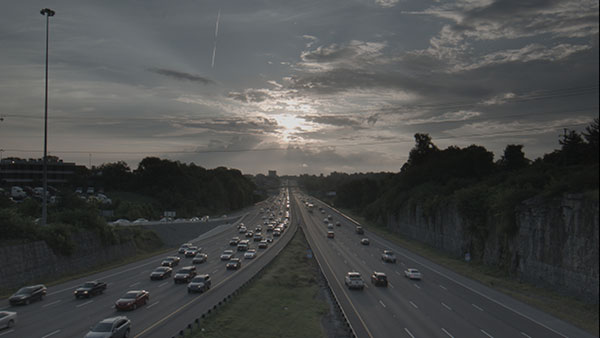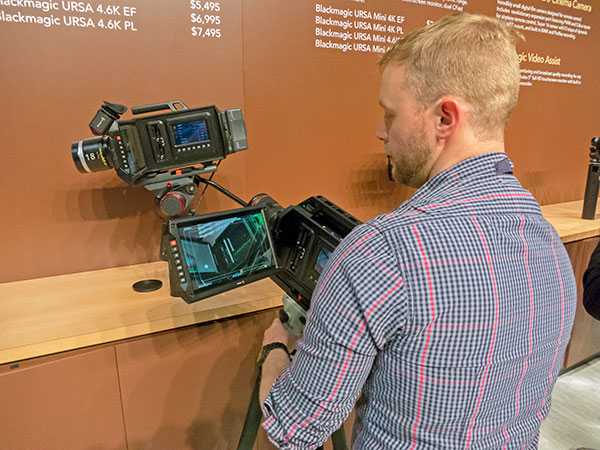How to Tackle Gear Fears to Become a Hybrid Video and Still Shooter

(Editor's note: The following story by noted photographer, videographer, and technologist Brian Hallett is the first in an ongoing series of pieces we'll be featuring on Shutterbug.com that discuss tools, tips and techniques for photographers interested in shooting video.)
Like it or not, gear is a part of the picture in the business of photography and video. While it’s not the whole picture, it can help one elevate their work.
Yet, some photographers only know their own gear, whether it is a Canon or a Nikon—or “insert your go-to brand name here because this manufacturer makes the best camera." We tend to know our gear and only our gear. Trust me, I know plenty of Canon shooters who might have trouble operating a Nikon (and vice versa).
When it comes to expanding one’s business to include video, the philosophy for many is to continue to shoot using their DSLR (or mirrorless) camera of choice. Usually it’s the brand of camera they’ve used for a while and know very well. I am here to tell you that your favorite camera might not be doing you many favors when it comes to shooting video.

More Than Just DSLRs & Mirrorless
Look, DSLRs and mirrorless cameras can make for sensational videos. Don’t get me wrong, I shoot on a Sony Alpha A7S, and if I need a killer time lapse then I turn to my Canon or my wife’s Nikon. However, often I have a project where I mix photography and video I carry a Canon DSLR for photos, a Blackmagic URSA for the 4K Raw video and a 2.5K Blackmagic Cinema camera for brushless gimbal shots.
The video from my DSLR is decent and the video from my Blackmagic URSA is great. The reason for the difference is that my DSLR shoots 8-bit color at 1080 and my URSA shoots 12-bit color at 3840—also known as Ultra HD. The dynamic range in the URSA’s video is 12 stops where the DSLR lands around 10 stops. Lastly, my URSA gives me more slow motion options. Trust me when I say that dialing in the exact frame rate I want is a luxury, and I might abuse it.
Fear can keep us from embracing the unknown, such as a new camera. If one has conquered the still photography world and is beginning explore the rabbit hole of video, I’m here to help. First off, anything new feels awkward and frustrating at the start. When you encounter those feelings, know you’re on the only path to get through it.
Overcoming Video Fears
What about the fear keeping one from rocking the video world? 4K sounds so big and Raw video, film LUTs, log curves, massive amounts of memory needed—seem like a beast best left untamed. Let the professionals figure it all out. They probably went to an expensive film school. Nonsense! Most of the shooters I know personally figured it out by screwing up and failing until they got it right.
Shooting in Raw video is only a little bit more complicated than shooting Raw photography. If one takes the time to learn software like Blackmagic DaVinci Resolve, it can become as easy to edit Raw video files as it is Raw photography files.

In many ways DaVinci Resolve offers many more color tools to work with. For example, Raw photography has traditionally contained quite a bit of information within the shadows of the Raw photo making it a relatively easy procedure to “lift” the shadows and pull in image information, making a photograph go from just a silhouette to adding detail and character.
When shooting on my Blackmagic URSA there is quite bit of image information hidden within the shadows and the highlights, 12-bit video can deliver nearly as good of a Raw image as a Raw photo from a Canon DSLR. However, it can be tough to do much shadow lifting with 8-bit video.
Getting the Most Out of Raw Video
What about Raw video’s “flat look”? One of the ways Raw video is able to expand its dynamic range (or the range from light to dark) is to record the images with less contrast—or flat images. Some camera builders call this a “log” file or a “film look,” and no, the camera doesn’t just take these flat images on purpose. With the correct settings and processing the flat (or film) look can be the stepping stone to video footage that looks similar to the still images you captured with your DSLR.
By having a flat Raw image, the video’s highlights and shadows can be dialed into the final look one wants to deliver to a client. In an 8-bit video where the highlights and shadows are baked in and adjusting the look of the image in post is going to be difficult, the image might begin to fall apart and introduce noise.


I suggest getting your hands on a Blackmagic URSA or Cinema Camera and shooting a few frames of Raw video. Those cameras record a digital negative, which can be opened and developed in Adobe Lightroom. Push and pull it, and I think you might be surprised with how much those digital negatives can be manipulated.
Are you afraid that you will be forced to learn new software? Well, you might have already learned the hardest part, which is developing a Raw image. If you’re already using Adobe Lightroom or Photoshop to process your Raw still photography, you likely know a thing or two about post processing. That base knowledge applies when processing Raw video. The program layout might look a little different but the basic controls are all there: highlights, shadows, color temperature or just about everything else you might need to dial in the look you want. The real difference is the ability of the software like DaVinci Resolve to further dial in a look with the color wheels, curves and keys.
A Digital Cinema Camera Revolution
We’re in the middle of a digital cinema camera revolution where high-end video cameras have developed more features at a smaller size and weight. The days of lugging a large digital cinema camera and finding the crew necessary to help operate it is (for the most part) coming to an end.
Yes, I shoot with a Blackmagic URSA and it’s a larger camera, but with the introduction of Blackmagic’s URSA Mini 4.6K camera we now have a feature rich camera in a small package. If the past can teach us anything, it’s that we can expect more features in an even smaller package in the near future.

The best part of using cameras like the URSA Mini is that the lenses can be easily shared with a DSLR such as a Canon 5D. Both have a Canon EF mount, meaning both cameras can electronically control the lens. When you have a great portrait shot with a 70-200mm IS F2.8 L series lens you can just as easily match the shot when you change over to shooting in 4.6K Raw.
What if you’re worried about bouncing between a video camera and a still camera? I like to organize my shoot so I’m not constantly swtiching between two cameras every other moment. For me, video comes first. The reason is that video shoots tend to be a bit more complex with the need to capture enough shots for an edit to work well. Still photography comes second. Once I’ve finished shooting video I shoot my still photography before we move onto a new set-up or scene. For me, this process has a certain amount of rhythm to it and feels natural.
I hope that in some small way I’ve helped you conquer hybrid shooting. Remember, cameras are tools and some tools are better for certain jobs. Yes, your DSLR or mirrorless camera can help you capture amazing images. But, if you’re trying to match your video to your still photography that DSLR might not be doing you a favor. Try other tools and try new free software like DaVinci Resolve. Be curious and have fun.
(See more of Brian Hallet's work on his Vimeo page.)












































